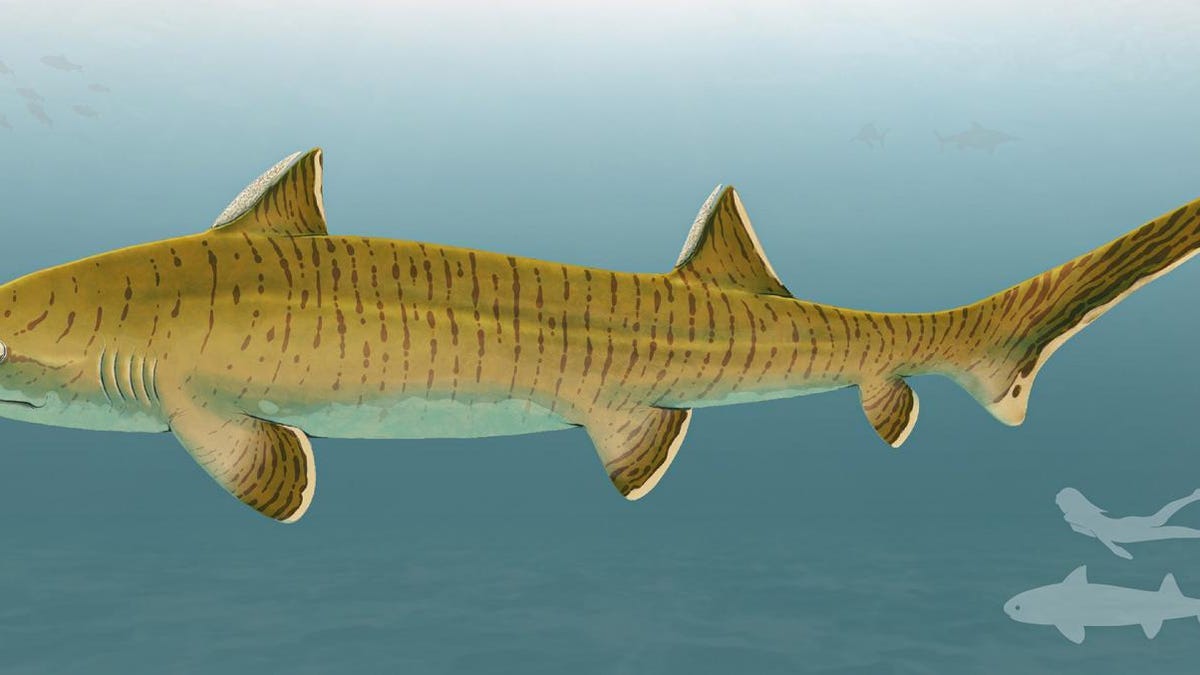Rare, nearly complete fossil reveals 'giant among Jurassic sharks'
A absolute unit from ancient times.
Sharks tend to be much harder to find preserved in fossil form than their bony dinosaur buddies. Shark cartilage breaks down, which is one reason a spectacular shark fossil found in Bavarian limestone is worthy of celebration. It's big, it's nearly complete and it's a rare window into the sharky side of the Jurassic past.
The University of Vienna described the fossilized Asteracanthus as "an exceptionally well-preserved skeleton" in a statement on Thursday. The shark swam in a lagoon area 150 million years ago during the Late Jurassic period.
This image shows illustrations and a photo of the fossilized Asteracanthus shark, which was found as a nearly complete skeleton.
The shark measured in at 8.2 feet (2.5 meters) long, making it "a giant among Jurassic sharks." The animal was previously known, but not in the kind of detail scientists now have after this fossil find.
"Asteracanthus was scientifically described more than 180 years ago by the Swiss-American naturalist Louis Agassiz on the basis of isolated fossil dorsal fin spines," the university said. "However, articulated skeletal remains have never been found -- until now."
A research team led by paleontologist Sebastian Stumpf of the University of Vienna published a study on the shark in the journal Papers in Palaeontology this week.
The extinct shark, part of a group known as hybodontiformes, is a close relative of modern sharks. The fossil offered up over 150 teeth, which it would have put to good use on its prey.
"Asteracanthus was certainly not only one of the largest cartilaginous fishes of its time," Stumpf said, "but also one of the most impressive."


